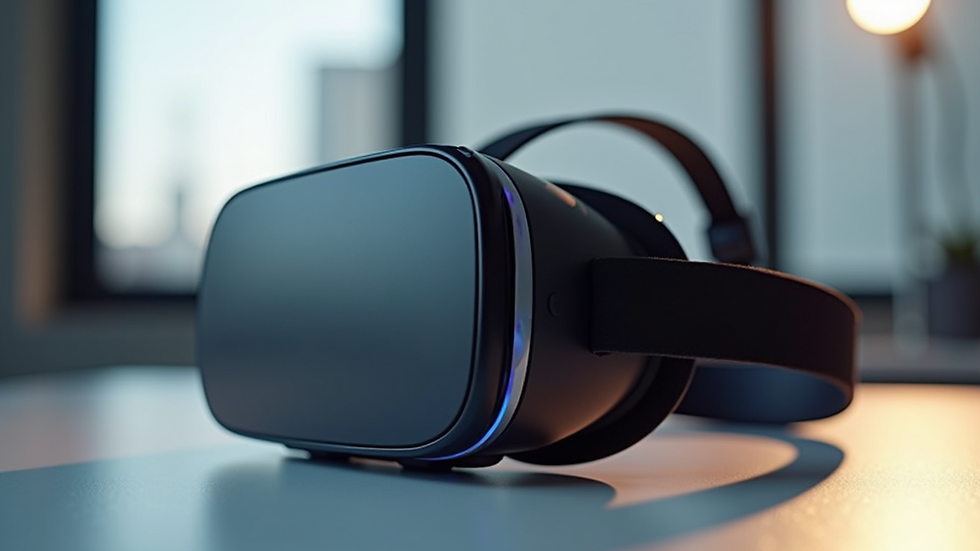Recent Breakthroughs in Virtual Reality Technology
- Amis Technologies
- Jul 10
- 3 min read
Virtual Reality (VR) has been a fascinating technology that has rapidly evolved over the years. From gaming experiences to educational tools, the recent breakthroughs in VR technology are making waves across various industries. In this blog post, we will explore the latest advancements, how VR has evolved, and its growing applications in day-to-day life.
VR Advancements in Hardware
The hardware supporting Virtual Reality has improved dramatically. Companies are now producing headsets that offer incredible experiences without the need for a powerful gaming rig. Take the Meta Quest 2, for instance. This standalone headset requires no external wires and provides high-quality graphics, making it accessible to a broader audience.
High-resolution displays enhance immersion. Recent models achieve resolutions more than 4K, leading to crisper images and enhanced realism. Also, advancements in motion tracking technology allow users to explore virtual worlds seamlessly. The inclusion of more sensors enables precise movements, translating real-world actions into the virtual environment accurately.

The Expanding Software Ecosystem
While hardware advancements are crucial, software enhancements are equally vital. Developers are creating a plethora of VR applications that cater to different interests. With platforms like SteamVR and Oculus Store, users can access a vast library of games and experiences designed for all comfort levels.
For example, educational applications have taken a leap forward. Programs like ClassVR allow students to experience historical events or explore the solar system with a level of engagement not achievable in traditional classrooms. Such software provides an immersive learning experience that can significantly improve retention and understanding.
Moreover, businesses are incorporating VR for training purposes. Companies are using virtual environments to train employees in situations they might not experience in reality, such as emergency response or technical equipment handling.

How Has Virtual Reality Evolved Over Time?
To appreciate where we are today, it’s essential to look back at the evolution of virtual reality. The journey of VR technology began in the 1960s with simple two-dimensional graphics. The invention of the ‘Sword of Damocles’ considered the first VR simulator, which required users to wear a bulky headset connected to a computer.
Fast forward to the 1990s; VR became more recognizable to the public with the launch of systems like the Virtuality gaming machines in arcades. However, limitations in technology hindered widespread adoption.
The real turning point came in the 2010s with the introduction of the Oculus Rift, which reignited interest in VR. This headset popularized high-quality virtual experiences and laid the groundwork for today’s consumer-ready VR technology. Now, with ultra-realistic graphics and integrated motion sensors, we can fully immerse ourselves in carefully crafted virtual spaces.
Real-World Applications of Virtual Reality
Virtual reality advancements have opened doors to numerous applications beyond entertainment. Healthcare is one field where VR is making significant inroads. Medical professionals are using virtual reality for patient treatment and training. For example, VR can assist in pain management during procedures by immersing patients in calming environments.
Furthermore, in the field of architecture, VR allows architects and clients to walk through buildings before they are even built. Tools like Enscape and IrisVR create 3D models that users can explore, enabling better decision-making and modifications during planning.
Several companies have even started using VR for marketing, allowing consumers to experience products in 3D before purchasing. This gives a better sense of scale and functionality, ultimately enhancing customer satisfaction.

Future Prospects of Virtual Reality
As technology progresses, the future of virtual reality looks promising. Continuous improvements in artificial intelligence and machine learning will likely enhance user experiences even further. Imagine VR systems that adapt to your preferences, creating personalized virtual worlds just for you.
Additionally, the integration of VR with other emerging technologies like augmented reality (AR) and mixed reality (MR) could revolutionize how we interact with digital and physical spaces. The holistic blend of these technologies would create novel experiences in gaming, education, and remote work.
Furthermore, as the gaming industry continues to invest in VR, we can expect to see more AAA (high-budget) games designed specifically for virtual reality. This will elevate the quality and depth of VR gaming, pushing boundaries we never thought achievable.
In conclusion, virtual reality is on an unstoppable trajectory. With ongoing virtual reality advancements in hardware, software, and practical applications, VR is becoming an integral part of our lives. From improving educational experiences to innovating training methodologies, the possibilities are endless, and the future holds great promise.
.png)




Comments